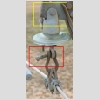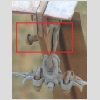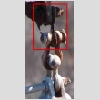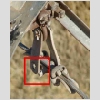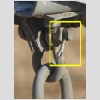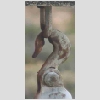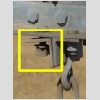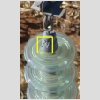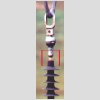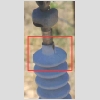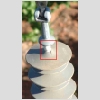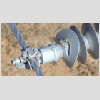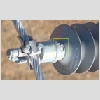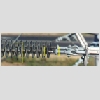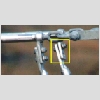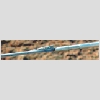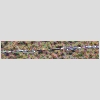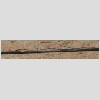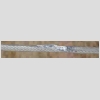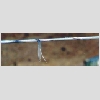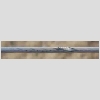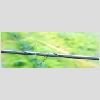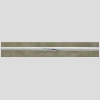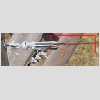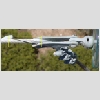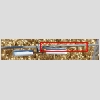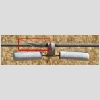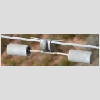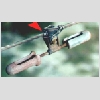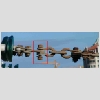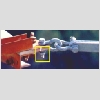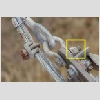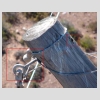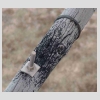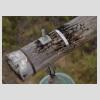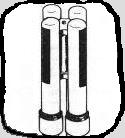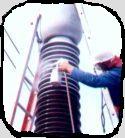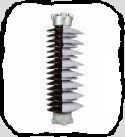“HAWKEYE” CLOSE-VISUAL OVERHEAD
LINE INSPECTION SERVICE

GENERAL DESCRIPTION
The Mace Technologies "Hawkeye" aerial close-visual inspection is a condition monitoring tool designed to establish the precise state of overhead transmission and distribution lines. The technique allows thorough examination of each component - even at midspan. Small but potentially catastrophic faults, such as displaced split pins, loose nuts and conductor strand damage, are readily detected.
The qualified inspector is seated on the skid of a helicopter and held at close proximity to the line. The helicopter follows a regular and well-defined flight path at each tower to facilitate a complete study of the structure from the earthwire attachment to the footing and then slowly proceeds down the span. The inspector's defect detection ability is greatly enhanced by the use of gyroscopically stabilised binoculars.
To assist the client in their own assessment of the nature and maintenance priority of the various faults, photographs of the defects are taken for reference.
All observations are directly recorded on a custom-developed Hawkeye database by the computer operator seated in the aircraft. The software is designed for the rapid entry of the nature of the fault, its precise location and the digital photograph reference. Operating on an intelligent prompt system, the programme demands entry of data absolutely relevant to the particular situation only. No important details can thus be missed and no time is wasted in the air.
The Hawkeye software utilises a pen-based computer tablet and is the most sophisticated aerial line inspection programme available. It eliminates the need for keyboard entry of information, thus further improving both the speed and accuracy of data capture.
THE INSPECTION TEAM
The Mace inspection team comprises:
- Roy Macey Pr.Eng., MSc(Eng)
Aerial inspector, Computer Operator, data analysis and report preparation.
(35 years experience in the overhead line field. Served as South Africa's representative
on the Cigre Study Committee B2, "Overhead Lines")
- Dick Viles DipTech
Aerial Inspector, Thermographer
(24 years experience on overhead lines and their components)
- Nando Salvoldi DipTech
Computer Operator, Thermographer
(28 years experience with Eskom and Mace Technologies)
- Allan Muir Pr.Eng., BSc(Eng)
Computer Operator, Software Support, Data Analyst.
(Specialist in overhead line design and related software for 15 years)
The first three members of the team have been together since the Hawkeye service was established in 1989. A list of the lines which have been examined to date is attached.
The Hawkeye inspections are conducted in association with pilots well experienced in line inspection, maintenance and construction. Bell Jetranger III, Bell Longranger, Squirrel or Hughes 500 helicopters are used. The aircraft meet all statutory requirements and any other specifications laid down by the client in respect of insurance, certification and performance.
DOCUMENTATION
A comprehensive inspection document is provided. This comprises a written report on the general state of the line and its various components, a complete listing of all defects found, separate listings of each category of fault, fault statistics and photographs of the defects.
The standard report structure is as follows:
Section 1: Introduction
Section 2: Inspection Description
Section 3: Structures
Section 4: Insulator String Assemblies
Section 5: Conductors and Conductor Fittings
Section 6: Earthwire and Earthwire Fittings
Section 7: Servitude
Appendix A: Fault Listing
- all faults
- insulator faults
- conductor faults
- earthwire faults
- tower faults
- servitude faults
Appendix B: Fault Statistics
- faults listed in frequency of occurrence
- faults listed alphabetically
- faults listed in terms of category
Appendix C: Photographs
The fault listings can also be made available on disc and formatted to suit the client's existing database software and systems.
"REDEYE" THERMAL INSPECTION
The Hawkeye inspection is most comprehensive but an internal defect on, for example, an incorrectly applied or deteriorating midspan splice, compression deadend or other current-carrying joint may be invisible to the eye and thus go undetected. Such faults on overhead lines are rare but, if they exist, can cause dropping of the conductors and serious disruption of supply. An infrared examination of the line is thus offered as an optional service that can be coupled with the visual inspection while the helicopter and personnel are on site.
For the Redeye infrared inspections, the thermographer is seated on the side of the helicopter and examines all current-carrying components, such as compression deadends, jumper flag terminals, midspan splices and conductor repair sleeves, with an extra high resolution (1280 x 960 pixel) thermal imager. The instrument employed is a Jenoptik Variocam HiRes Research 1.2 Mega camera which is of the uncooled focal plane array (FPA) type operating in the 8 to 14 micron spectral range. The images are stored on an internal flash card. Additional storage and viewing by a second thermographer is facilitated by a firewire connection to the on-board computer. Where thermal elevations are detected, the recorded images can be studied in detail by means of the Jenoptik “VarioAnalyze” and “VarioCapture” thermal analysis software.
INSPECTION COSTS
The price of a Hawkeye and/or Redeye inspection is largely determined by the local costs of helicopter operation. The configuration of the line, the number of circuits, the number of conductors per phase, the ratio of suspension to strain towers and the general condition all influence the time – and therefore the helicopter rotor hours - required for rigorous inspection. It can vary widely but the average inspection time is 15 structures per hour. The geographical location and the distance the helicopter has to be ferried to site also have a significant influence on costs. Each project is thus quoted on an individual basis. However, the quotations provided are fixed and include helicopter operation, fuel, the services of a pilot, inspector and computer operator, the preparation of the comprehensive report, complete instrumentation and all travelling and subsistence expenses.
FAULT DETECTION
The high quality of the Hawkeye inspection can be largely attributed to the experience of the personnel involved. Comprehensive knowledge of overhead lines and their individual components is critically important. For example, being able to identify the various types of ceramic and non-ceramic insulators and being familiar with all the possible failure mechanisms associated with their particular construction and material is necessary for the detection of potential problems and degradation in the early stages. The following illustrations show a small selection of the types of defects that are typically identified.
VIEW USER REFERENCE LIST
DOWNLOADABLE BROCHURES PAGE
DOWNLOAD HAWKEYEDESC1.pdf
DOWNLOAD POWERPOINT PRESENTATION
